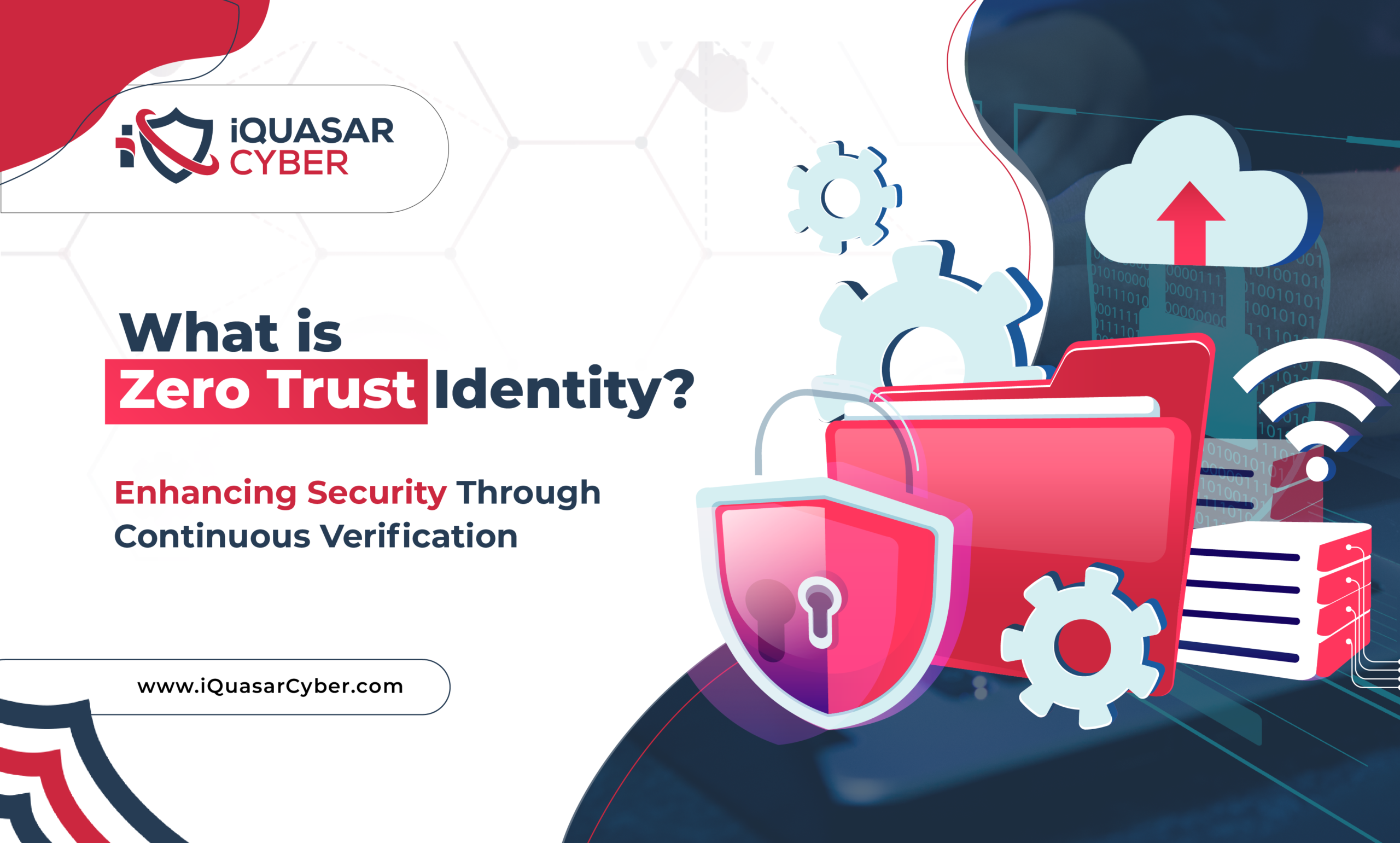The digital landscape is a battlefield. In 2023 alone, IBM reported the average cost of a data breach to be a staggering $4.45 million, a stark reminder of the ever-increasing financial burden cyberattacks pose on organizations. Once seen as impenetrable fortresses, traditional security models are now riddled with vulnerabilities. This vulnerability is underscored by a 2023 Statista report indicating that over 353 million individuals in the United States alone were affected by data breaches. Zero Trust Identity (ZTI) is a revolutionary response to this evolving threat landscape. It represents a shift in cybersecurity, prioritizing continuous verification and least privilege access control.
What is Zero Trust Identity?
Zero Trust Identity is a security concept based on “never trust, always verify.” It treats all users, devices, and networks as untrusted until their identity and integrity are verified. With Zero Trust Identity, strong authentication and continuous verification of user identity are required to access any resource, regardless of location within the network.
Why is it Important?
The traditional castle-and-moat security model, where defenses are focused on fortifying the network perimeter, is no longer adequate in the face of sophisticated cyber threats. Perimeter defenses alone cannot prevent data breaches or unauthorized access, especially when users access resources from outside the network or using personal devices.
Zero Trust Identity addresses these challenges by ensuring only authorized users with the right credentials and context can access sensitive resources. It reduces the attack surface by limiting user privileges and enforcing least privilege access. Zero Trust Identity helps detect and prevent unauthorized access attempts, insider threats, and lateral movement within the network by continuously verifying user identity and context.
Implementing ZTI
Implementing Zero Trust Identity involves several key components and best practices:
- Strong Authentication: Zero-trust identity requires robust authentication mechanisms, such as multi-factor authentication (MFA), biometric authentication, or passwordless authentication. MFA, in particular, adds an extra layer of security by requiring users to provide multiple forms of identity verification.
- Identity Governance: Establishing a centralized identity governance program is crucial. This involves defining and enforcing policies for user access, provisioning and de-provisioning access rights, and regularly reviewing and auditing user privileges.
- Continuous Verification: Zero Trust Identity goes beyond initial authentication. It requires continuous verification of user identity and context throughout their session. This can be achieved through device posture assessment, behavioral analytics, and risk-based authentication.
- Micro-segmentation: By dividing the network into smaller segments and enforcing granular access controls, micro-segmentation limits the blast radius of a breach and prevents lateral movement within the network.
- Least Privilege Access: The principle of least privilege (PoLP) should be applied, ensuring that users have only the minimum necessary access rights to perform their tasks. This reduces the potential impact of compromised accounts or insider threats.
- Contextual Awareness: Zero Trust Identity considers the context of the user’s access request, including their location, device health, and user behavior. The system can make dynamic access decisions and adapt security policies by leveraging contextual information.
- Integration with Security Tools: Zero Trust Identity should be integrated with other security tools, such as security information and event management (SIEM) systems, endpoint detection and response (EDR) solutions, and network analytics platforms, to enable threat detection, incident response, and continuous monitoring.
Benefits of ZTI
Enhanced Security: Zero Trust Identity significantly reduces the risk of unauthorized access and data breaches by requiring strong authentication and continuous verification. It also limits the impact of compromised credentials or insider threats.
- Improved User Experience: Organizations can provide a seamless and frictionless user experience by implementing adaptive authentication and contextual access policies. Users are only challenged with additional authentication factors when necessary, based on risk levels or anomalous behavior.
- Better Visibility and Control: Zero Trust Identity provides granular visibility into user activities and access patterns, enabling security teams to detect and respond to potential threats more effectively. It also facilitates better access to governance and compliance with regulatory requirements.
- Scalability and Flexibility: Zero Trust Identity supports the dynamic nature of modern work environments, including remote work, cloud adoption, and bring-your-own-device (BYOD) policies. It enables secure access from any location or device, ensuring that security measures scale with the organization’s needs.
By challenging the traditional notion of trust and verifying identity continuously, organizations can bolster their defenses against external and internal threats. Implementing Zero Trust Identity is a strategic decision that empowers businesses to embrace digital transformation securely, protect critical assets, and ensure a seamless user experience.
As we navigate the evolving cybersecurity landscape, Zero Trust Identity is not just a best practice but a necessity for organizations aiming to stay one step ahead of adversaries and safeguard their digital future. We at iQuasar Cyber offer a comprehensive ZTI solution suite to help your organization seamlessly transition to a more secure future. Contact us today for a free consultation and discover how ZTI can empower your cybersecurity strategy.
